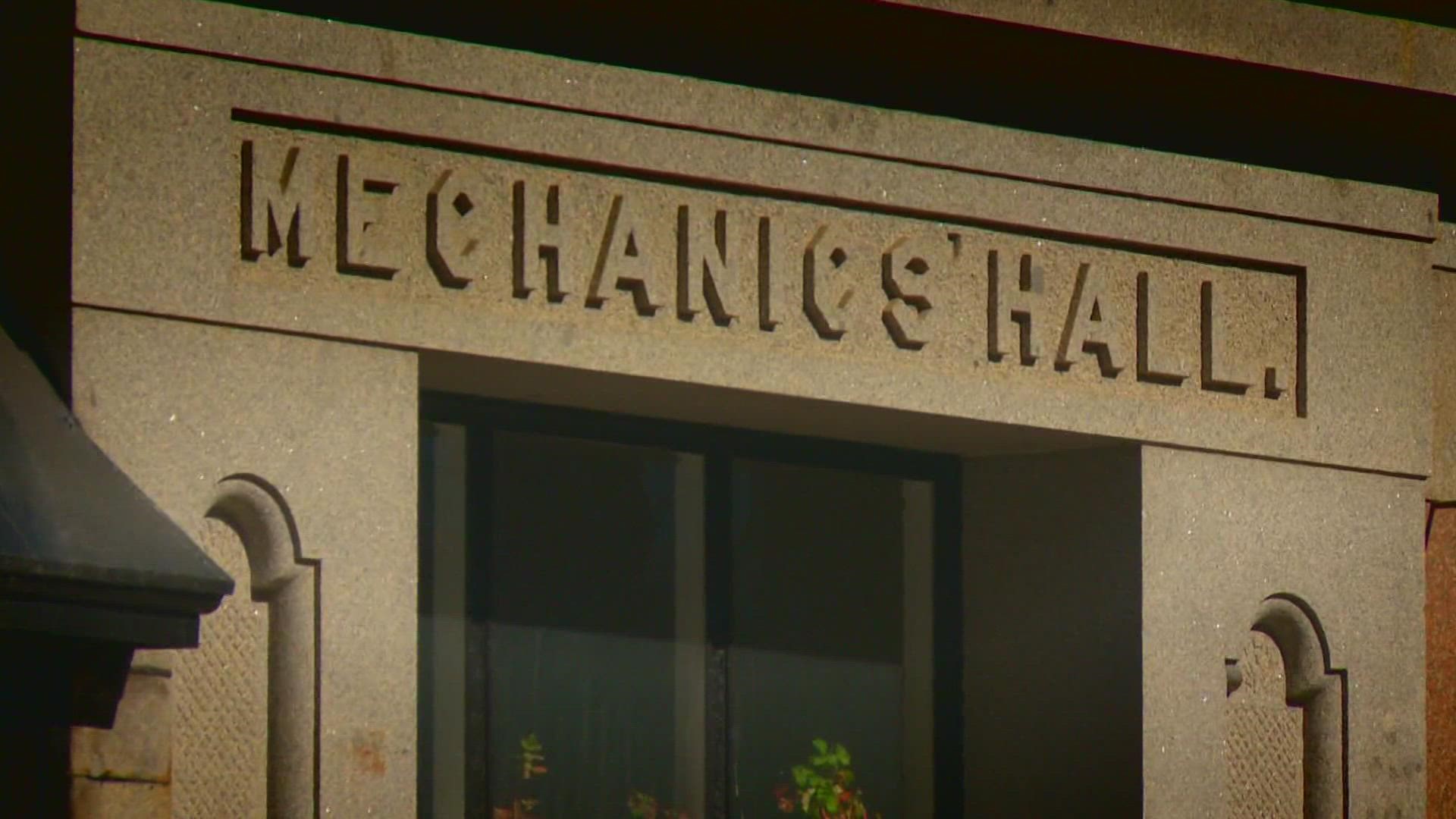PORTLAND, Maine — The scratches are something folks don’t forget.
In Mechanics’ Hall in Portland, those shallow abrasions run along the ceiling near the entrance to the top floor. Visitors can see them and, even better, reach up to touch them, and when they do, they’re feeling history.
“This building was a mustering spot for Civil War soldiers,” Paul Stevens, an architect with deep ties to Mechanics’ Hall, said. “With this low ceiling, when they came up here, they had their rifles over their shoulders. And the sights on the rifles scratched the ceiling.”
Those marks were left by men going off to war to save the Union.
Mechanics’ Hall was built in 1859, the year before Abraham Lincoln was elected president. The Maine Charitable Mechanic Association erected it to house a library where its members — carpenters, coopers, stonecutters, blacksmiths, and more — could further their educations by borrowing textbooks and technical manuals.
“It was involved in teaching the mechanics of the day how to read and write,” Heather Harvey, the current librarian at the Hall, said. “Which is quite possibly something they never would have learned without the library.”
The board and staff of the hall realized a few years ago that to preserve this grand old structure and to keep its mission alive, they would have to open the place up, not only to people who work with their hands in the trades and arts but also to the public at large.
The idea is to let people know the hall is here, that it’s a lively venue offering music, performances, reading, lectures, and all kinds of other events.
“I will often stand at the entrance of the ballroom and greet people as they’re coming in for a function or an event,” executive director Annie Leahy said. “I can’t tell you how many people walk into this room and physically gasp. They are so surprised to find this space in the center of the arts district.”
Not surprisingly, for a building that’s 163 years old, it needs a lot of repairs and upgrades, which will likely cost $8 to $10 million. The board and staff are committed to raising that money, and they figure the best way to do it is to get people into the building so they can hear its story.
“We’re blessed,” Ken Pierce, the board’s secretary, said. “But a building of 1859 vintage requires a lot of tender loving care. And that usually involves money.”

